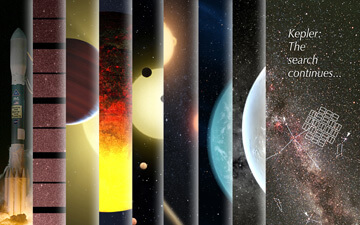A second flywheel of the four wheels that help adjust the telescope has broken. At least three flywheels are required for the telescope to function.

The latest report on the NASA website: "During the semi-weekly contact on Tuesday, May 14, 2013, the Kepler space telescope was again in safe mode, as it had already been earlier in the month. This is a propeller driven safe mode. The root of the problem is still unknown, but the proximity between the two cases suggests a fault in the spacecraft's stability. The spacecraft is aimed so that its solar collectors follow the sun and it slowly rotates around the sun line. Communication stops and resumes as the spacecraft spins.
The Kepler space telescope was launched in 2009. In July 2012, one of Kepler's four flywheels broke, leaving scientists aware that another malfunction could prevent the telescope from operating as intended.
A senior NASA official, John Grunsfeld, said that scientists are working to fix the problem. The goal right now is to give the telescope a resting state, that is, a state where the fuel consumption is minimal, to leave fuel for months and years and thus give the scientists and engineers time to decide how to proceed.
So far, the $600 million telescope has identified 132 exoplanets and alerted about 2,700 more candidates that need to be examined by other means to identify more planets among them.
Kepler completed its first three-and-a-half-year mission last November, and is now in an extension period. The space agency takes solace in the fact that the telescope will produce a wealth of data that can drive new discoveries for years. And as mentioned last month, the scientists announced the discovery by means of Kepler of two planets similar to the Earth and orbiting the star Kepler-62 in the Harp constellation, 1,200 light years away from the Earth.
About a week ago We reported that a team of astronomers from Tel Aviv University and the Center for Astrophysics shared with Harvard University and the Smithsonian Institute (CfA) announced the first discovery of a planet outside the solar system using a new method based on Einstein's theory of relativity. The new planet, Kepler-76b, is referred to by the team as "Einstein's planet"

2 תגובות
"Propeller Driven Safe Mode"
I assume you mean "Thruster-Controlled Safe Mode"
Safe mode controlled by maneuvering motors (meaning that the direction of the telescope is performed by rocket motors and not by the starter wheels)